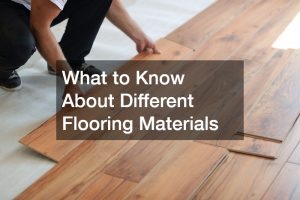When it comes to building a house, there are plenty of styles to choose from. From classical to neoclassical and minimalist, the list of options is extensive, so broad that one might get lost and overwhelmed trying to decide.
Still, certain styles and trends are particular to eras and moments in our existence. What was popular in the sixties and seventies is not popular now. But that doesn’t mean it won’t be again in the future. What is favoured now might last a long time or vanish, bringing in new designs, novel concepts, and ideas.
Three trends in home design specific to our times are a blend of interiors and exteriors, built-in appliances, and the proliferation of environment-friendly construction materials. Learn more about them in this blog.
Blend of Interiors and Exteriors
One of the most popular home design trends is combining indoor and outdoor environments. In the past, the living room was part of the inside of a house, and a patio or garden was part of the exterior.
Today, these differences have become obsolete. Indoor spaces blend naturally with those outdoors, creating a sense of spaciousness and comfort. Even if your house is in the middle of an urban metropolis, it can still have that natural feeling that all country homes have. It can be warm and colourful.
To achieve this, there are plenty of things you can do. For example, you can make use of a retractable awning or residential canopy to both expand and contract spaces within your home based on your specific needs. Another idea is to build outdoor facilities such as an outdoor kitchen, rest area, or patio lounge using the same style, design, and colours as those you have indoors. The result is a seamless environment that gives your house vibrancy and grandeur.
Built-in Appliances and Storage
One of the many disadvantages of overpopulated cities and towns is not having enough space. Many families have the financial means to buy the things they like but nowhere to put them.
This notion hasn’t been lost in architectural design. As such, homes that maximize space while maintaining functionality continue to become more and more popular.
Enter built-in or integrated appliances, a wonderful solution for convenience and visual appeal. An example of a built-in kitchen appliance is a refrigerator, an oven, or a dishwasher. Instead of its entire body being on the outside for everybody to see, only the door is visible. The rest is integrated into the wall, creating an atmosphere of both minimalism and luxury.

And it doesn’t stop there. Built-in appliances are not only suitable for the kitchen. They are also used in all other house areas, including bedrooms, living and dining rooms, and even bathrooms. Some, like the closets, cabinets, and cupboards, serve as storage facilities. Others are traditional home appliances like washing machines and TVs.
However, one thing to consider is that once you decide on integrating built-in appliances into your home, there is little room for change. If you decide to move, you cannot take them with you unless you tear down the entire house and build a second one just like it.
Environmental Consciousness in Materials
The biggest global trends in all industries and business areas are environmental protection and awareness. Terms like CO2 emissions, greenhouse gases, exhaust gases, air pollution, and contaminated water are at the forefront of almost every decision we make. The same is true for designing and building a house, specifically the materials with which to do it.
Instead of wood and other non-renewable sources, many houses have metal roofs. The benefit is a dual one. A metal roof is cheaper and easier to make than a wooden roof, but it also provides natural cooling and ventilation systems. As a result, it saves the owner money on electricity bills while using fewer natural resources.
Another example is precast concrete. Instead of spending large amounts of time, labour, and energy resources making cement onsite, precast concrete is made with moulds, stored, and curated for specific purposes. It is then taken to the facility itself and placed where need be.
Other materials include bamboo, recycled plastic, sheep’s wool, and bales of straw.
Building a house is one of the most exciting journeys any person will take. You are not only constructing a physical dwelling but also a new life. As such, it requires deep thinking, openness, and flexibility. It is true in all stages, such as the planning phase and initial design, selecting materials, and the final changes.
If you find yourself indecisive, you can look more into these trends to learn what you can adopt for your home. These are ideas that will make the process of building your house not only easier but also more fulfilling and fun.











